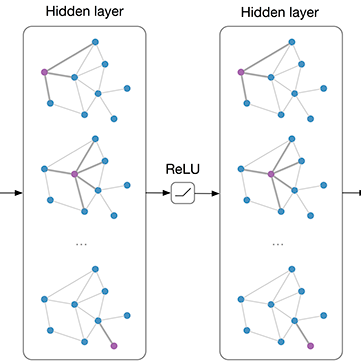The information diffusion performance of GCN and its variant models is limited by the adjacency matrix, which can lower their performance. Therefore, we introduce a new framework for graph convolutional networks called Hybrid Diffusion-based Graph Convolutional Network (HD-GCN) to address the limitations of information diffusion caused by the adjacency matrix. In the HD-GCN framework, we initially utilize diffusion maps to facilitate the diffusion of information among nodes that are adjacent to each other in the feature space. This allows for the diffusion of information between similar points that may not have an adjacent relationship. Next, we utilize graph convolution to further propagate information among adjacent nodes after the diffusion maps, thereby enabling the spread of information among similar nodes that are adjacent in the graph. Finally, we employ the diffusion distances obtained through the use of diffusion maps to regularize and constrain the predicted labels of training nodes. This regularization method is then applied to the HD-GCN training, resulting in a smoother classification surface. The model proposed in this paper effectively overcomes the limitations of information diffusion imposed only by the adjacency matrix. HD-GCN utilizes hybrid diffusion by combining information diffusion between neighborhood nodes in the feature space and adjacent nodes in the adjacency matrix. This method allows for more comprehensive information propagation among nodes, resulting in improved model performance. We evaluated the performance of DM-GCN on three well-known citation network datasets and the results showed that the proposed framework is more effective than several graph-based semi-supervised learning methods.
翻译:----
GCN及其变体模型的信息扩散性能受邻接矩阵的限制,这可以降低它们的性能。因此,我们引入了一个名为Hybrid Diffusion-based Graph Convolutional Network (HD-GCN) 的图卷积网络新框架,以解决邻接矩阵引起的信息扩散限制。在 HD-GCN 框架中,我们首先利用扩散映射在特征空间中相邻的节点之间促进信息扩散。这允许在没有相邻关系的类似点之间进行信息扩散。接下来,我们在扩散映射之后使用图卷积来进一步传播相邻节点之间的信息,从而使相似节点在图中相邻的地方扩散信息。最后,我们使用通过使用扩散映射获得的扩散距离来规范和约束训练节点的预测标签。将此正则化方法应用于HD-GCN的训练,从而得到平滑的分类表面。本文提出的模型有效地克服了仅由邻接矩阵引入的信息扩散限制。HD-GCN通过将特征空间中邻近节点之间的信息扩散和邻接矩阵中相邻节点的信息扩散相结合,利用混合扩散。该方法允许节点之间进行更全面的信息传播,提高了模型性能。我们在三个著名的引文网络数据集上对DM-GCN的性能进行了评估,结果表明,所提出的框架比几种基于图的半监督学习方法更有效。


